Gia Lai is a mountainous province located in the north of Central Highland Vietnam. Gia Lai province was re-established on August 12th, 1991 on the basic of separating Gia Lai-Kon Tum province into Gia Lai province and Kon Tum province.
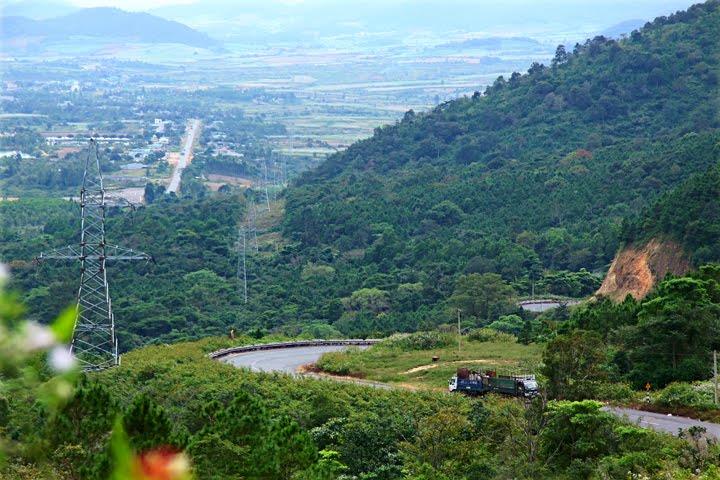
Gia Lai is a province in the north of Central Highlands with the average altitude of 700-800m above the sea level. The province stretches from 12°58'20" to 14°36'30" north latitude and from 107°27'23" to 108°54'40" east longitude. Gia Lai province shares border with Quang Ngai, Binh Dinh, Phu Yen to the east, Ratanakiri province (Cambodia) to the west with 90km boundary, Dak Lak to the south, and Kon Tum to the north.
Gia Lai is located on a part of the large ancient stone with 4000m thick of Kon Tum massif. Gia Lai terrain is lower from North to South and inclines from East to West. Its terrain can divides into 3 types including mountain, plateau and valley. Among them, plateau is the popular and important terrain of Gia Lai with 2 plateaus of Kon Ha Nung and Pleiku. The mountainous terrain occupies 2/5 of the provincial natural area, most located in the north. This terrain is strong fragmented, surface topography and other forms of Gia Lai terrain as the plateaus, valleys and plains are dotted with mountains. The third topography is valleys soon be exploited for food production. Valleys mostly locate in the east of the province. Besides, Gia Lai land is divided into 26 different types including 7 main types.
Gia Lai features the tropical monsoon climate with abundant moisture, rainfall and without storms and frost. Gia Lao climate is divided into 2 distinct seasons: rainy season and dry season. In which, the rainy season often starts from May to October. The dry season lasts from November to April in next year. The annual average temperature is 22 to 25°C. Climate and land in Gia Lai are suitable for development of industrial crops, animal husbandry, agriculture and forestry bringing high economic efficiency.
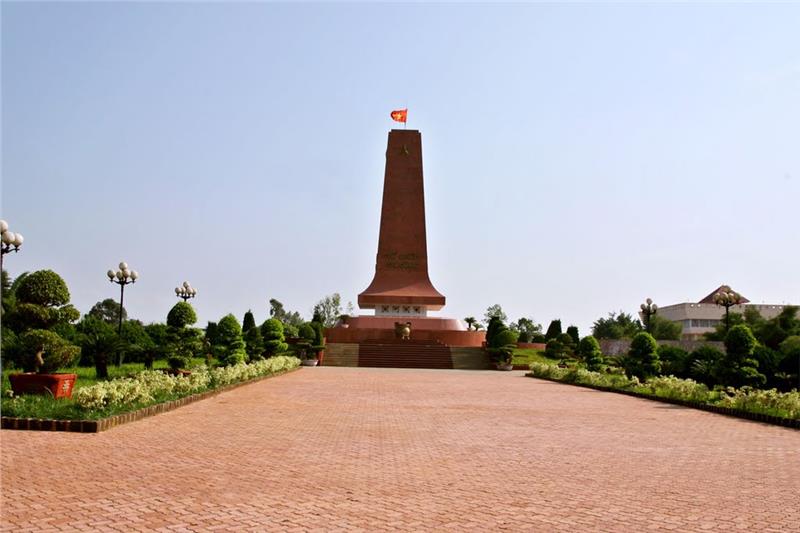
Gia Lai province today is the formerly residence of Jrai ethnic people and Bahnar people. Before the French set up domination in Central Highlands, Gia Lai ethnic group is in the final stages of primitive society transitioned to a class society. The late nineteenth century and early twentieth century, the French colonists gradually established the ruling apparatus of government in Gia Lai. After many changes, mergers, separations to form the administrative units on the highlands, on May 24th 1932, according to the Decree of Governor General of French Indochina, Pleiku Province was established. After 1945, the revolutionary government called Gia Rai province. In June 1946, the French occupied Gia Rai and named Pleiku province.
However, during the French resistance, the revolutionary government still called Gia Lai province, but over the different periods, Gia Lai was under the direct leadership of the various agencies, districts in the province also repeatedly changed the name and administrative boundary. On September 20th, 1975, according to the Resolution of the Politburo of merging the two provinces of Gia Lai and Kon Tum into Gia Lai-Kon Tum province. On August 12, 1991, under Resolution of the 9th Session National Assembly VIII, Gia Lai - Kon Tum province was split into Gia Lai province and Kon Tum province.
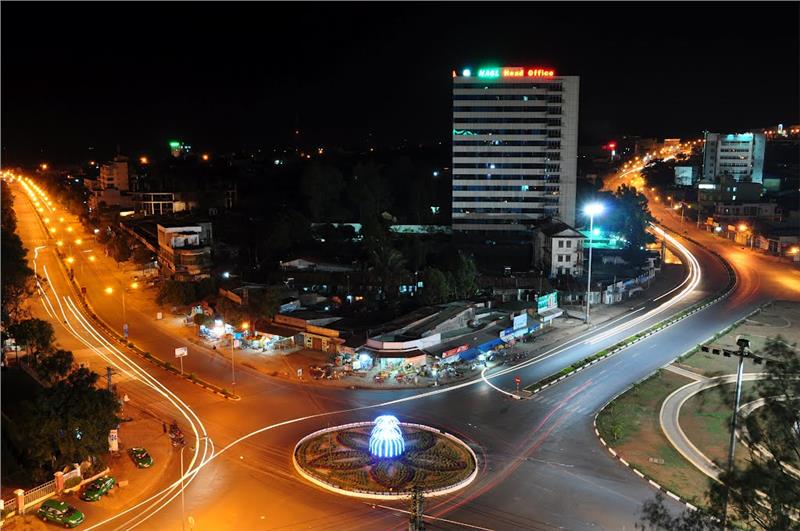
Gia Lai province includes 1 city, 2 towns and 14 districts, of which 233 communal administrative units, 24 wards, 15 towns and 184 communes. Administrative units of Gia Lai consist of Pleiku City, An Khe town, Ayun Pa town, Chu Pah district, Chu Prong district, Chu Se district, Dak Doa district, Chu Puh district, Phu Thien district, Mang Yang district, Krong Pa district, Krong Chro district, K’Bang district, La Pa district, Duc Co district, Dak Po district.
Gia Lai population reaches 1,322,000 people; the population density is 85 thousand people/ km². The urban population reaches 399,900 people, the rural area reach 922,100 people. Natural population growth rate increases by 17.2‰. Currently, Gia Lai has 38 ethnic groups and foreigners living together. Among them, Kinh ethnic group account the most with 713,403 people, the second group is Gia Rai ethnic people with 372,302 people, and the third one is Ba Na with 150,416 people. Other ethnic groups are Tay, Nung, Muong, Thai, Dao, Mong, Ede, and Hoa...
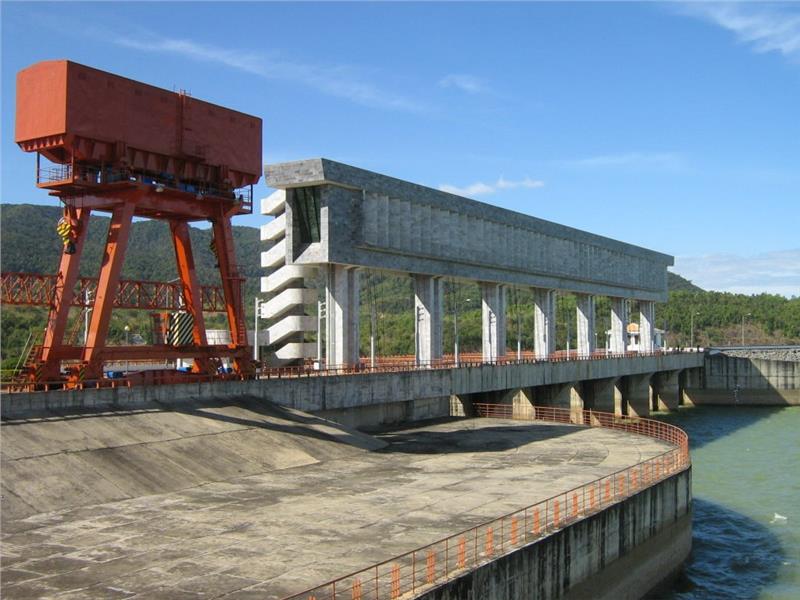
Gia Lai has the great potential for hydroelectric power with the theoretical reserves of about 10.5 to 11 billion kW; economic and technical reserves are 7.1 billion kW with an installed capacity of 1,502 MWh. In addition to four large hydropower projects with installed capacity of 1,422 MW. There are also 85 small hydropower plants with a capacity of 80.200 kW distributed fairly evenly, enabling the development of production. Besides, Yaly hydropower project with a capacity of 720 MW and the power output of 3.68 billion kWh completed in April 2002 have a major impact on the economic development of the province, ensuring power needs for the entire region. The total reserves of surface water are about 24 billion m3. This is the great potential for energy industry development - a key industry in Gia Lai economy. Gia Lai currently has 4 hydropower factories with the capacity of 100MV including Yali, Kanak-An Khe, Sesan 3 and Sesan 4.
The economic growth rate (at the constant price 1994) reached 12.7%, in which agriculture-forestry-fishery increased by 6.51 %, industry - construction increased by 15.32% and service rose 16%. The economic structure continued to shift in the right direction, in which agriculture - forestry and fishery accounted fro 38.04%, industry - construction accounted for 32.92% and service occupied 29.03%. GPD per capita reached 34.1 million dong, increased 13.73% over the 2013. In 2014, the weather was relatively favorable, so the agricultural production developed stably, shifted towards the commodity production, suitable with the potential and advantages of each region. The value of industrial production reached 9444.8 billion dong, achieving 100.2% of the plan, increasing 6.6% compared to 2013.
The industrial production value reached VND 8386 billion, achieving 100% of the plan and increasing 11.4% compared to the same period. Total retail sales of goods and service was estimated at 33,130 billion dong, reaching 100.1% of the plan and reaching 18.8% compared to 2013. The export turnover was estimated at USD 850 million, reaching 193.3% of the plan, increased to 2.24 times over 2013. The import turnover was estimated at USD 80.3 million, achieving 236.2% over the plan, up 28% compared to 2013.
In the recent years, the health system of Gia Lai has gradually been improved and enhanced in the quality. The provision of health services is expanded, the proportion of ethnic minorities is entitled to health care and health care services are increasing. Facility of schools is invested from many sources. Currently, there are 808 preschools and schools, 15 educational centers, 210 community educational centers. With such school system, education in Gia Lai province is relatively complete, contributing to reduce illiteracy in the province.
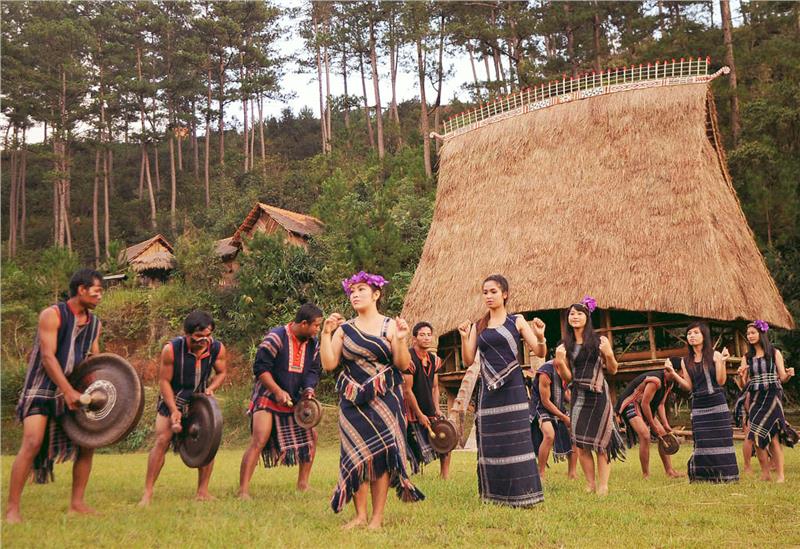
Located in strategic areas in the northern region of Central Highlands, Gia Lai is the land of with long-standing history and development, diverse residents and ancient culture imbued with the unique identity of ethnic minorities. Though experienced many changes, Gia Lai land maintains a diverse culture deeply imbued with the indigenous culture of Central Highland. Referring to Gia Lai is referring to the gong culture, the communal houses, wooden sculpture, the grave, festivals and dances of Jrai, Bahnar in the strong and vibrant sound of gong. For people in Central Highlands, gongs and gong culture are the invaluable assets. Gong music is not only an artistic value long affirmed in social life but also the crystallization of mountains and rivers through generations. Until now, Gia Lai still preserves the unique traditional cultural elements, reflecting through art activities, music, painting, dancing or singing. This area also is stored the folk cultural treasure with legends deeply rooted in the human subconscious.
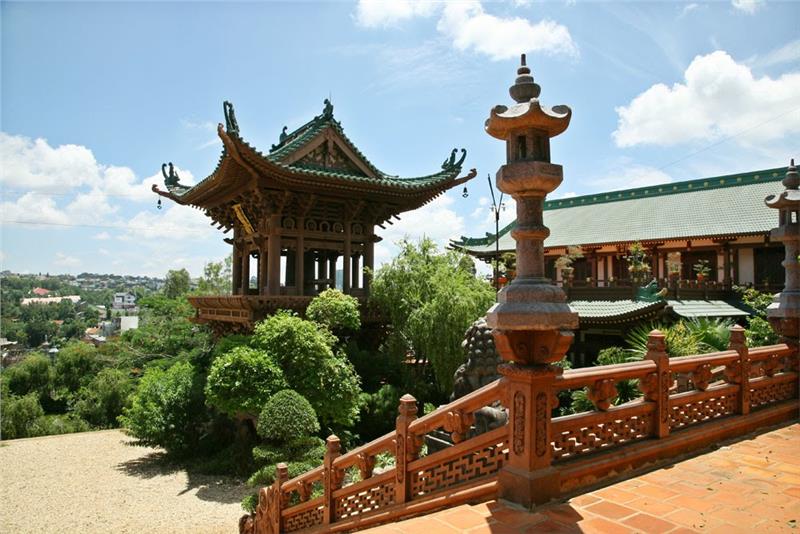
Potential of Gia Lai tourism is very diverse with many natural and artificial sceneries. Primitive forest with diverse flora and fauna, spectacular waterfalls, streams and lakes as Bien Ho (Great Lake) - a famous scenic spot, Minh Thanh Pagoda. Many mountains like Mang Yang Heaven Gate, Ham Rong Mountain. Artificial scenery consists of vast forest planting rubber, tea and coffee. If said Thac Ba (Yen Bai) is one of the largest artificial lakes in Vietnam famous for beautiful scenery by human hands, the Great Lake (T'Nung Lake) is one of the most beautiful and romantic lakes endowed by nature. This lake was formed from a volcanic crater. Great Lake is dubbed as the eyes of Gai Lai people in general and people in Pleiku city in particular. The mystic beauty of T'Nung Lake associated with archaeological relics exhibited in the Museum of the province is the proof for the long history of this land.
Ayun Lake is located about 70km from Pleiku city in 2 districts of Phu Thien and Chu Se. Ayun Ha Lake formed when Ayun River was blocked to construct Ayun Ha irrigation work in early 1994. Ayun Ha Lake provides water for 13.500ha farmland and brings big benefits from fishery resources, ensuring stable life for the ethnic minorities here. Also, this lake is an ideal place to organize tourist activities, entertainment... On the holidays, Tet holiday, visit often come here to participate in games, water sports and excursions around the lake. Coming to Ayun Ha Lake, tourists will have the opportunity to immerse into the poetic and unspoiled scenery and breathe the pure air.
Ialy Hydropower plant project with an area of over 20km2 is located in Chu Pah district (Gia Lai) and Sa Thay district (Kon Tum). This is a national key project, the 2nd largest after the Hoa Binh hydropower. With a surface area measuring 64,5km², Ialy hydroelectric project has installed capacity of 720MW and annual average power output of 3.7 billion kWh. The work has contributed greatly in the process of improving the economy, culture, and society... the Central Highlands in general and Gia Lai in particular. Coming here, tourists will have the opportunity to visit the hydropower plant, contemplate the mountainous scenery on Se San River and enjoy the pure atmosphere of mountain and forest. In addition, there are many attractions in Gia Rai appealing tourists once setting foot on this plateau full of sun and wind.
Festival
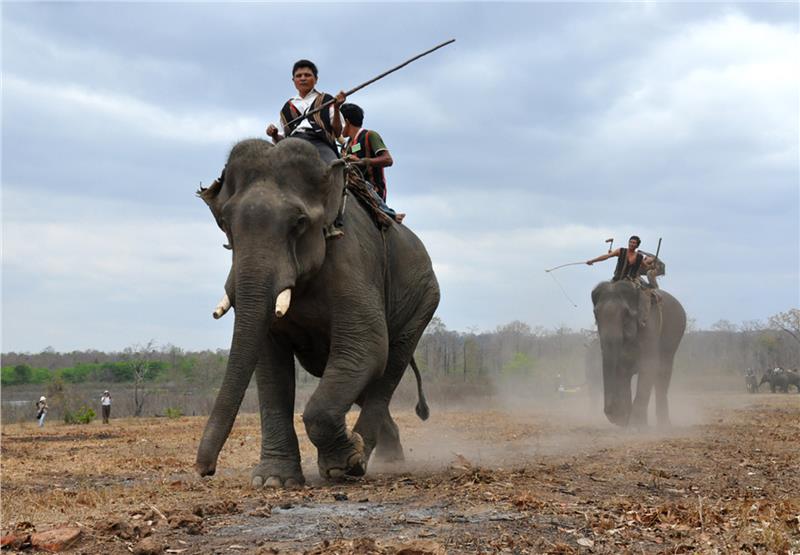
So far, the folk festivals in Gia Lai are still considered the beautiful paintings in the colorful cultural space of a province with many ethnic groups living together. Typically, festivals of Bahnar and Jarai still keep intact their traditional values. For Bahnar and Jrai people in Gia Rai, traditional belief is one of the factors forming unique various types of folklore as customs, folklore ... especially festivals. These peoples havr animism belief, they believed in the manifold natural world, existing an invisible force, affecting all aspects of life and plant. People in Central Highlands (including local residents in Gia Lai) do not know Spring, Summer, Fall and Winter, but only familiar with two seasons in the agricultural calendar. Acording to the calendar of most peoples in this region, the last month of the year (corresponding to February, March calendar), is commonly known as ning nong month. This is a time for people to rest, conduct traditional ceremonies... Festivals often hold in ning nong month are bo ma ritual (pothi, hoa lui of Jrai people), new year (somah ko cham), thanksgiving (congratulating longevity - worship Yang Mopu)... Besides, the festival is organized by season, Bahnar and Jrai communities also have rituals held outside the festive season, depending on the growth cycle of the plant (seed sowing festival, rice field rituals, crop protection ceremonies, so on). Festival in Central Highlands in general and Gia Lai in particular not only meet the cultural-spiritual needs of ethnic groups, but also is a cultural tourism product.
